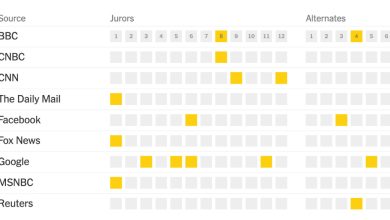
The Revolutionary Power of Women’s Rage and Grief
An artist friend texted me recently, asking how to contend with the anger and sadness she was feeling about the state of the world. I can think of no better balm than the Museum of Modern Art’s Käthe Kollwitz retrospective, the first ever at a New York museum that encompasses this German artist’s groundbreaking prints and drawings and her sculpture, posters and magazine illustrations.
Once you’re there, go straight over to her series “Peasants’ War,” which she started in 1902, to find her own outlet for her burning desire for radical change. She was about 10 years into her already successful career when she made it, a remarkable feat given that she was a woman in a country that still didn’t allow women into art schools. In 1898, she had been nominated for a gold medal at the Greater Berlin Art Exhibition for her first major print cycle, “A Weavers’ Revolt” (1893-97), but did not receive it: The Prussian minister of culture thought her subject matter — a fictional uprising based on a contemporary play about an 1844 revolt, a watershed moment for many German socialists — too politically subversive, while Kaiser Wilhelm II himself objected to the idea of a woman garnering top prize.
Born in 1867, Kollwitz was an avowed socialist whose career stretched from the 1890s to the 1940s, a period of tremendous social upheaval and two world wars. Though she was a member of the progressive Berlin Secession art movement, she kept a distance from the elite art world, living in a working-class Berlin neighborhood with her husband, a doctor who tended to the poor.
With “Peasants’ War,” Kollwitz again turned to the past to share her outrage at the injustices around her “which are never ending and as large as a mountain.” The seven-part series deals with the historical revolt that swept German-speaking countries of Central Europe in the 16th century, not as a transcription of historical events but as an imagined narrative showing the exploitation of farm workers (men treated no better than animals yoked to a plow, a woman in the aftermath of a rape by a landowner), their explosive response, and the chilling repression that followed. It is a story worthy of Charles Dickens or Émile Zola, told from a woman’s point of view.
The largest print, “Charge,” focuses on the figure of “Black Anna,” reputed to be a catalyst of the violence, urging a mob of peasants to action. She is no “Liberty Leading the People.” Unlike Eugène Delacroix’s 1830 image of a beautiful and bare-breasted personification of French freedom, Kollwitz’s crone is shown from the back, her sinewy arms raised and hands clenched urgently, practically launching herself into the crowd.




